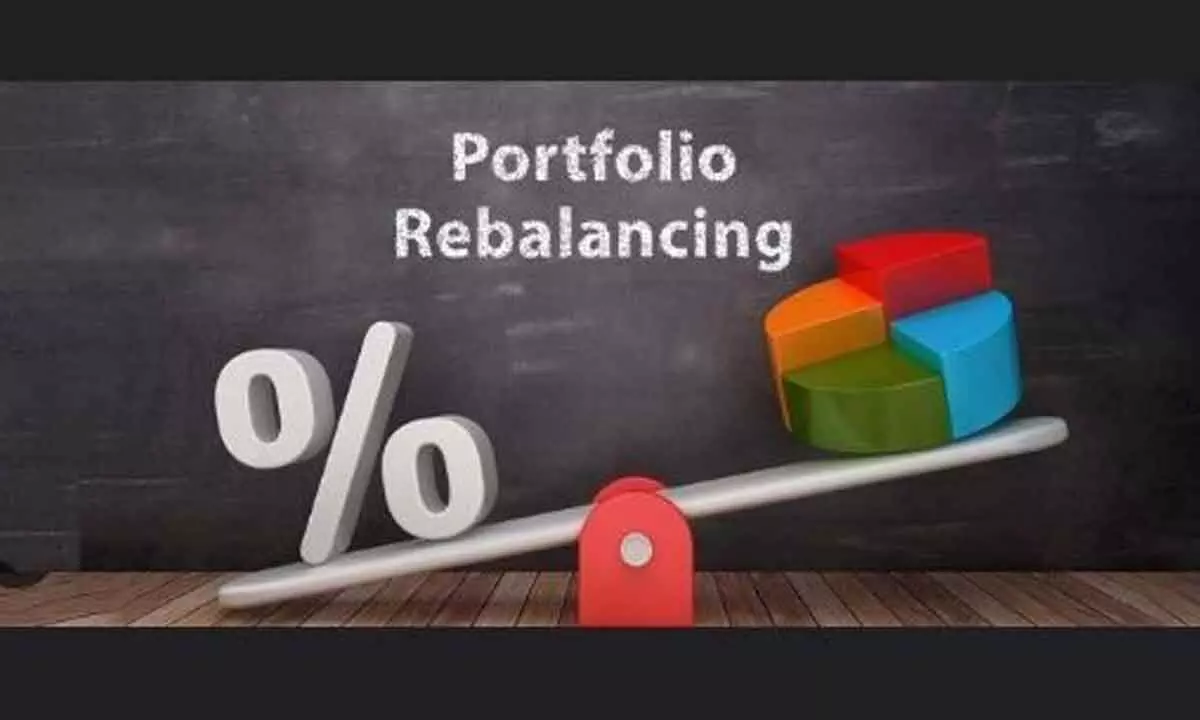Why an investor needs portfolio rebalancing
The process of buying and selling portions of your portfolio in order to meet the pre-set allocation is portfolio rebalancing. The timing or the periodicity could be again looked at from the risk appetite and goal timelines
image for illustrative purpose

The shaving off of the excess returns (than planned for) pave way for realisation of profits while keeping the risk contained to the desired levels. This is the reason why portfolio rebalancing is important for a steady wealth creation
The equity markets have been on a roll since pandemic and we’ve hardly seen a great turbulence barring for a few weeks in mid 2022. Investors with even medium-term horizon have seen greater returns if they have remained allocated to equities during this phase. At almost all points of the time some of the fundamental parameters like P/E (Price-to-Earnings) ratios have been on a historically higher range much above the conventional averages deemed comfortable.
The market rally also has increased the threshold of large and mid-cap was raised by 25 per cent as announced by the Association of Mutual Funds in India (AMFI). This is the latest rebalancing after the December 2023 where the stocks are graded based on their capitalisation on a six-monthly basis. The lure to make more money and the continuous realisation of the returns could play havoc on our rational thinking. This could lead to unpleasant experiences when the markets move south, which would happen at some time, can’t escape from the law of averages and mean reversion.
When we begin our investment journey, we usually dedicate the resources to each bucket i.e., asset allocation and within the asset class the amount of exposure to sub-assets is also decided. This allocation reflects our risk appetite and the goal timelines. For instance, a moderate investor with a 10-year horizon has made allocation of equity at 60 per cent and within equity to large caps at 50 per cent and the rest equally divided in small and mid-cap stocks. In the last six months, the BSE Sensex rose by 9.4 per cent while the BSE Midcap and Smallcap indices outperformed gaining 25 per cent and 22 per cent respectively.
So, the initial allocation would now have given a weighted average return of 16 per cent overall while the new weights would’ve transformed. The new weights would deviate from the initial allocation making the investor expose to a higher risk profile. So, the new reality would be that the weightage of large caps would be decreased by about 3 per cent while increasing that quantum to mid and small caps. The risk is ignored as long as the markets are in a rally but when volatility sets, as it would, then the investor would go through a lot of turmoil.
The process of buying and selling portions of your portfolio in order to meet the pre-set allocation is portfolio rebalancing. The timing or the periodicity could be again looked at from the risk appetite and goal timelines. There could also be a range defined or the excess of the set limits so that a deviation is tolerated to an extent. This could be particularly beneficial when the goal is long-term. This also defines the periodicity but ideally after every decent runup in the markets, a re-look at the portfolio allocation to the ideal could be conducted.
This process could also mitigate the loss aversion bias. In general, for the same quantum of loss or gain, people experience disproportionate pain (more) for a loss than a gain. This complicates the handling of investment mistakes when they occur. Most of us don’t like to admit the wrong or failure of a particular investment strategy or philosophy, aggravating the losses further. The above instance of perceived loss is severe than an equivalent gain is called as Loss aversion, in behavioral finance.
The psychological effects of the loss or potential to loss could induce risk taking attitude or behavior that jeopardises the investment as it could worsen the realised losses. This asymmetric experience could cause investors to behave irrationally and make bad decisions such as to hold a stock for too long or too little time in the hope of making their initial decision right. The lack of acceptance of wrong done could turn disastrous limiting for a course correction.
This periodic assessment of risk associated with the portfolio and to check whether it’s within the premise of the investors risk tolerance helps in keeping away the excesses at each interval. Also, the shaving off of the excess returns (than planned for) pave way for realisation of profits while keeping the risk contained to the desired levels. This is the reason why portfolio rebalancing is important for a steady wealth creation.
(The author is a co-founder of “Wealocity”, a wealth management firm and could be reached at Equity markets, Portfolio rebalancing, Asset allocation, Risk tolerance, Behavioral finance, Loss aversion, Market volatility, Investment strategy, Wealth management, Financial goalsknk@wealocity.com)

